When most chicken breeds are developed, they are designed for a practical purpose. This could be chicken for eggs or it could be chicken for meat. It could be for feathers or they could be chickens for showing. So what are the best chickens for showing? On this page, we are going to introduce you to these absolutely stunning show chickens. Bear with us!
The Best Show Chickens
Even though they have other purposes as well, these are the best show chickens:
- Wyandotte
- Orpington
- Silkie
- Buckeye
- Cochin
- Brahma
- Faverolle
- Barbu d’Uccle
- Sebright
- Old English Game
- Yokohama chicken
- Modern Game
1. Wyandotte
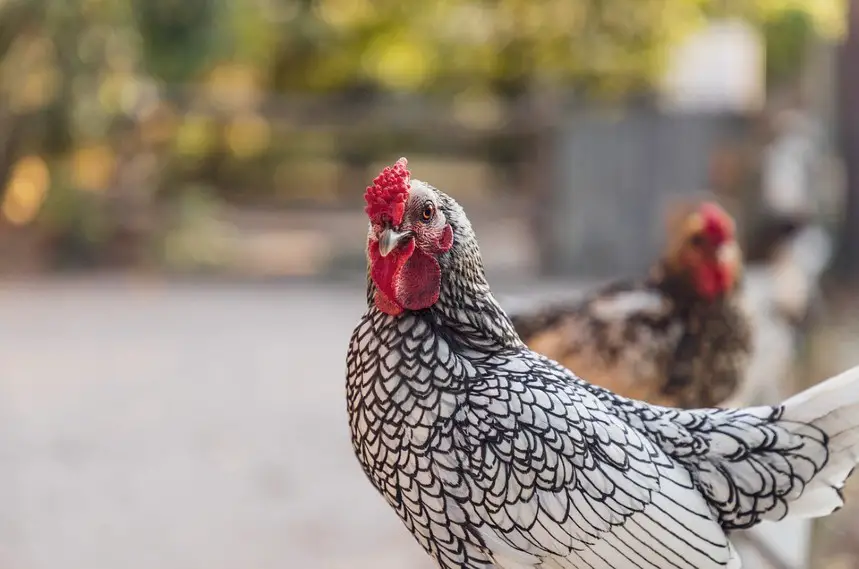
The Wyandotte chicken is one of the most beautify show chickens. It is regarded as one of the most beautiful of the ‘popular’ breeds, and you will often find it dominating poultry shows around the world.
This is in part due to the beautiful Wyandotte chicken colors of feathers that they post (there are several options available), and the stunning color they have in their eyes, feet, comb, and beak.
Even though it was not developed to be a show chicken the Wyandotte would certainly be turning heads if you had this in your flock. Actually this is a a dual purpose breed, developed for eggs and meat.
Do You Want Big Beautiful Eggs?
Then you must check this ORGANIC & NON-GMO feed. Our hens lay jumbo eggs now and they love this feed! You can check it right here on Amazon.
2. Orpington

Introduced back in 1886, the earliest Orpington chickens were bred to be black in color. This is because they were meant to be show chickens. You didn’t want the color of the chicken to change.
As breeders worked on developing the look of the Orpington, the egg production tailed off.
But, beside that, the Orpington was bred to be high in both eggs and meat production. The hens can still pump up 180 eggs per year.
3. Silkie

If you are lucky enough to own this show chicken in your backyard, then you probably know how stunning they look like.
The hens can give you a maximum of 100 eggs per year. That is why most backyard chicken owners nowadays, are not using the Silkie chickens for their eggs at all.
Instead, the Silkie chicken is going to be a fantastic ornamental breed of chicken (perfect for chicken shows), and for helping to fertilize other chicken eggs (they are very good at this).
4. Buckeye
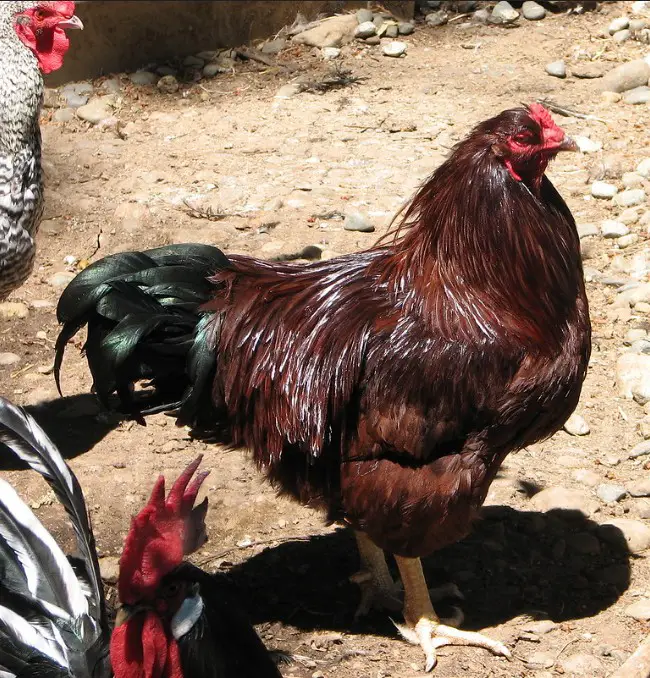
The Buckeye Chicken was developed in Ohio, in the US. It appeared in the beginning of the 19th Century. This is a very special chicken breed, because it was being initially bred by a woman.
Yeah. Other chicken breeds have been bred by women, but none of them have become officially recognized chicken breeds.
While these chickens are designed for meat and egg production, they are also brilliant show chickens, and many people will have them as ornamental chickens to brighten up their yard.
5. Cochin
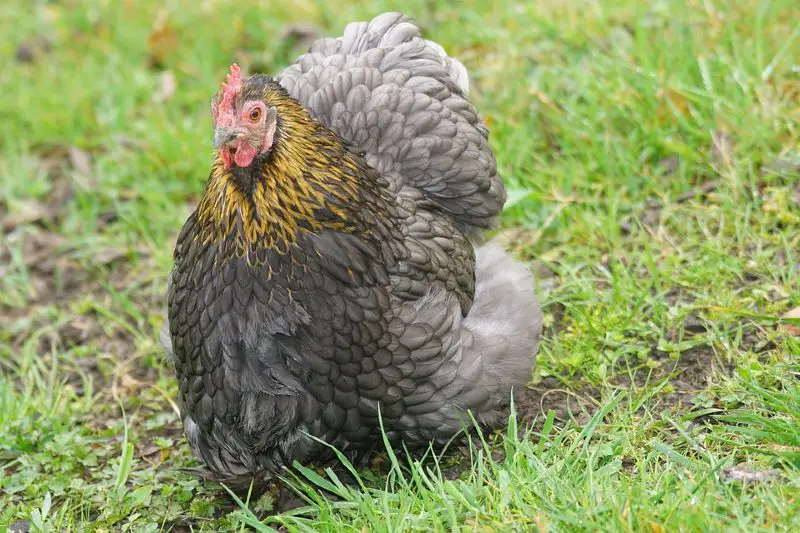
Do we need to talk about why the Cochin chickens are great show chickens? Well, we are sure that by simply looking into them you will get the answer.
This is a very beautiful looking chicken. We really do not have much of an idea of how the chicken evolved to become the stunning looking chicken that we all know and love today.
6. Brahma
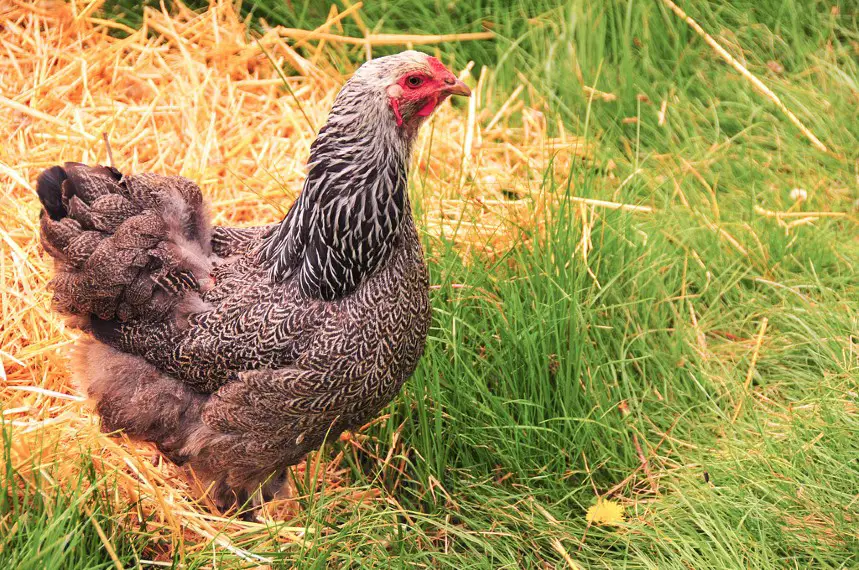
The Brahma chicken was initially bred to be a meat chicken. A chicken that could produce a lot of meat., actually. This is one of the largest chicken breeds around. The roosters can way up to 12 lb.
Although, the size of the Brahma that we have around now is actually considerably lighter than the chickens we had in the 18th Century. We assume that this is because most of the breeding of the Brahma chicken nowadays is not for meat, but to create a good looking show chickens.
7. Faverolles

Perhaps the ‘stand-out’ feature of the Faverolles chicken is the beard that they boast. This is going to be a slightly different color to the rest of their feathers, and it looks rather elegant.
This breed of chickens with feathered legs were not bred to be show chickens, though. They were designed to produce meat, which means this is a fairly large fowl.
The feathers on the Faverolles chicken are really fluffy. This means that the chicken can look a lot larger than it actually is.
8. Barbu d’Uccle – Show Chickens
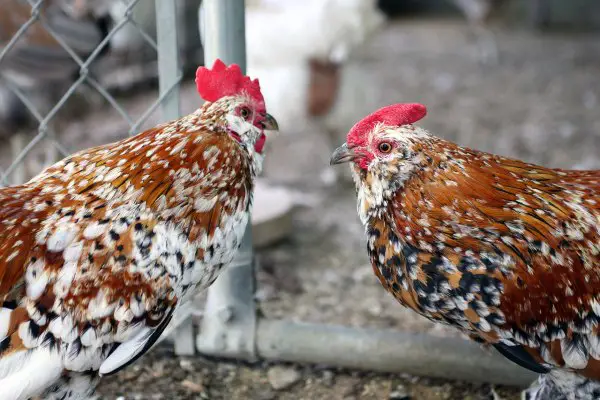
This is another true bantam breed of chicken with feathered legs. They are also called Belgian d’Uccle. They were developed in Belgium in the city of Uccle. You can find them as a show chickens or ornamental chickens.
They are true bantams which means there is no large variety of this chicken.
You wouldn’t expect to use this breed for meat, right? But, if you want to opt this breed, beside having a great show chicken in your backyard, you can expect the hens to pump out 150-200 small white or tinted eggs per year.
Show Chickens by Purpose
Remember when we said that every chicken was developed for some purpose, right? Well, the above breeds were not actually bred to be show chickens only. They are mainly used for eggs and meat production.
However, there are chicken breeds that were developed with an intention to be used only as a show chickens or ornamental chickens. Those are the following four:
- Sebright
- Old English Game
- Yokohama
- Modern Game
9. Sebright
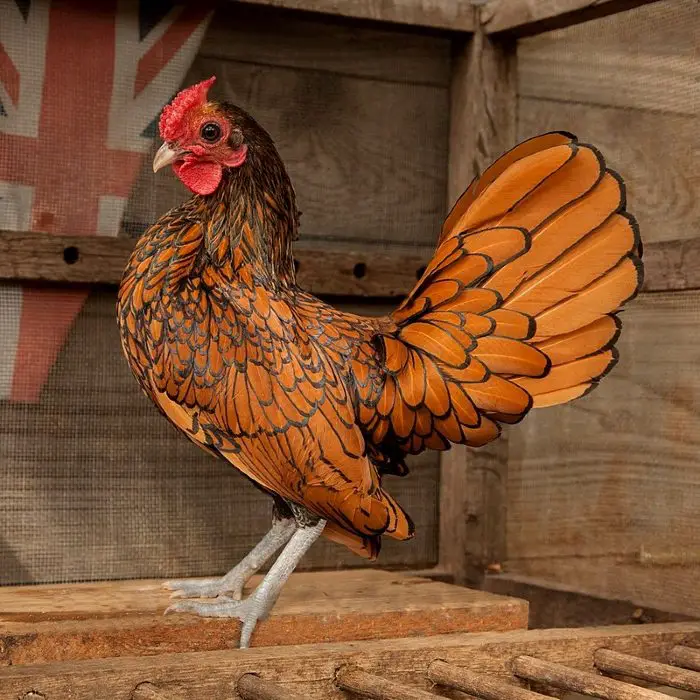
These show chickens are true bantams, meaning they do not have their corresponding large version. They were named by the man who created them in the 1800s.
They are commonly seen in competitive poultry shows nowadays. Check our article about the Sebright bantam chicken.
10. Old English Game
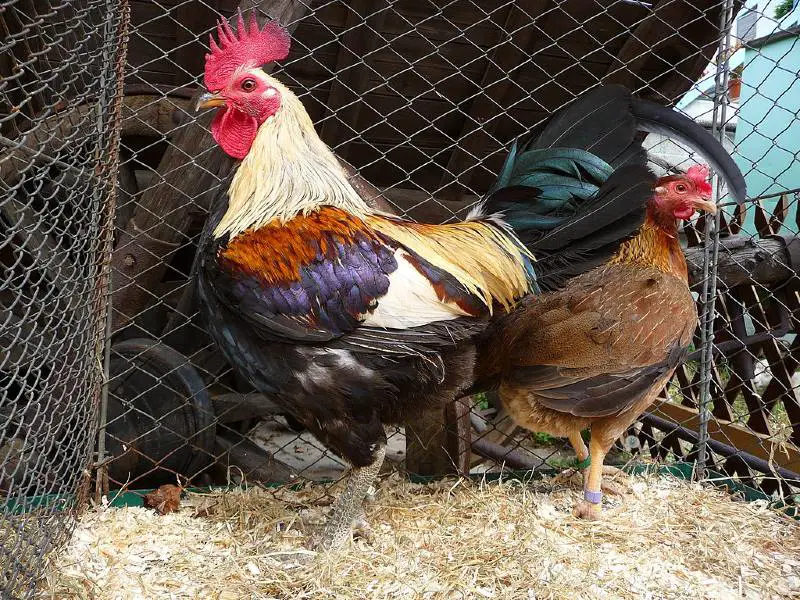
Being one of the most aggressive chicken breeds, these show chickens were developed to be used only for shows and cockfighting (illegal today in most of the countries). You can’t expect to get many eggs or meat out of them.
One interesting fact about these show chickens is that they are known to be capable of long flights. Yes, some chickens can fly. So keep these in mind if you want to raise Old English Game chickens in your backyard.
11. Yokohama Show Chickens
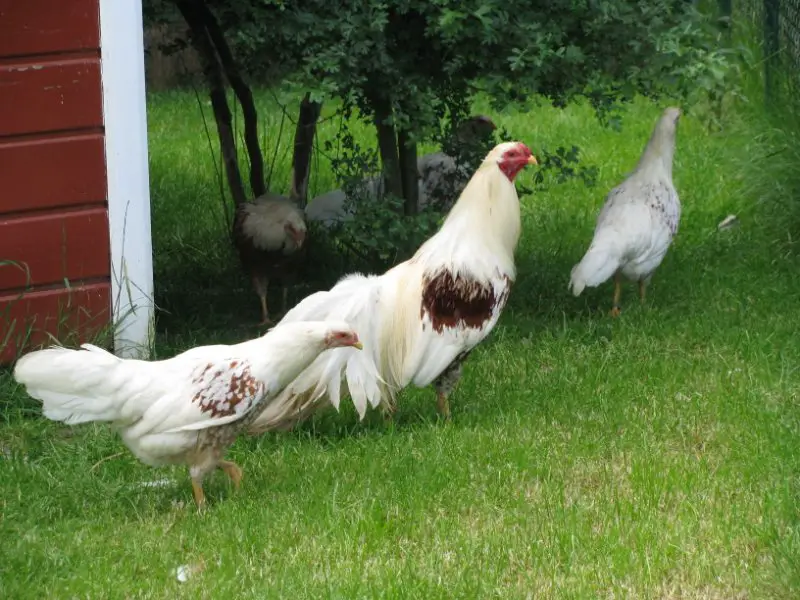
According to its name, you would think that this is a Japanese breed of a show chicken right? Well, no.
This is actually a British/German breed of show chickens. It was developed in the 1800s from ornamental birds brought to Europe from Japan.
It has unusual coloring and very long tail-feathers. Even though they are kept as a show chickens or ornamental breed, you can expect a full-sized hen to lay about 80 eggs per year. Read more in depth about the Yokohama chicken breed.
12. Modern Game Show Chickens

The Modern Game is another chicken breed in the long list of breeds originating from England. It was developed in the 1800s to be used as a show chicken.
If you want to raise it, unless you are planning to show your bird, keep in mind that they are not good egg layers, nor you can expect some meat out of them (as with all show chickens).
Raising Show Chickens
Did you know that raising show chickens is not as easy as you think?
It can be quite different and much harder than raising backyard chickens for eggs or meat. It is the same as raising a dog that you want to show it.
If you want to get your dog into a dog show, you will certainly want to raise your dog with a proper diet and give your dog a proper exercise and training.
Same here. Experienced show chicken owners feed their show chickens with a special diet based on, the desired weight for their breed and the effects of certain feeds on plumage color.
There are hundreds of chicken breeds and each of the breed have its own standards that your show chickens must met. So it is impossible for us to cover them here. We just wanted you to get the idea.
Some of the things you need to keep in mind, if you want to show your chicken are:
- The chicken has no defects
- It is free of disease
- The chicken is well developed
- It is correct type for its breed
- The chicken has the appropriate color for its recognized variety by APA (if you are in the US)
- The chicken weighs appropriate for its breed’s standards
- The chicken is mature


Pingback: Shamo Chicken Breed - This Is Why It Isn't For Everybody - ChickenMag
Pingback: ALL Gold Chicken Breeds Recognized In US - ChickenMag
Pingback: Welsummer Chicken - Is This The Perfect Dual-Purpose Breed?
Pingback: Sebright Chicken - Golden or Silver - Which One Is the Most Stunning?
Pingback: Ayam Cemani - The 'All Black' Chicken Breed, Eggs, Meat & For Sale Info
Pingback: Phoenix Chicken: Golden and Silver - An In-Depth Breed Guide
Pingback: Cream Legbar Chicken - A Unique Crested Blue Egg Laying Breed
Pingback: Houdan Chicken Breed - Learn About the White and Mottled Houdan
Pingback: Bielefelder Chicken - Eggs, Size, Colors, For Sale Info and More
Pingback: Yokohama Chicken - A Gorgeous Looking Chicken For Your Backyard